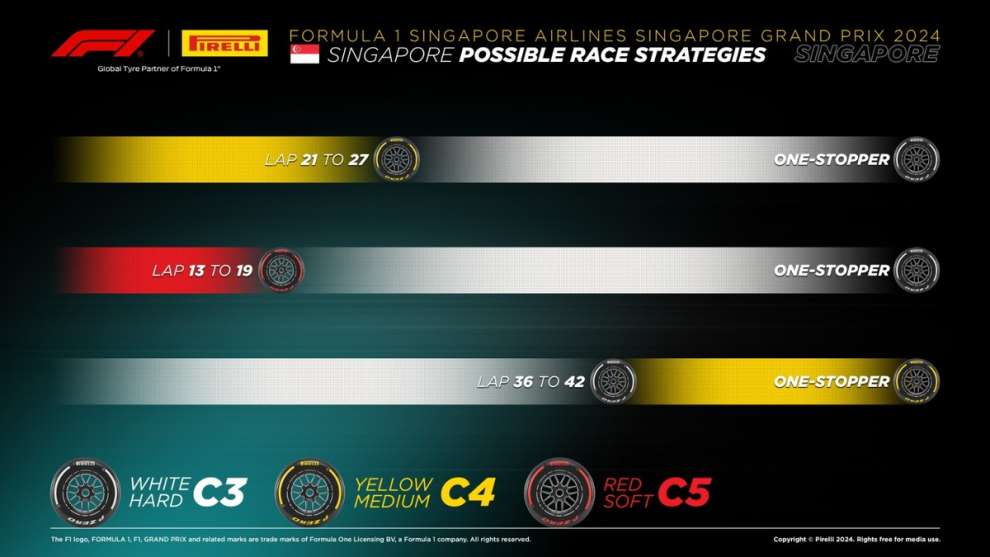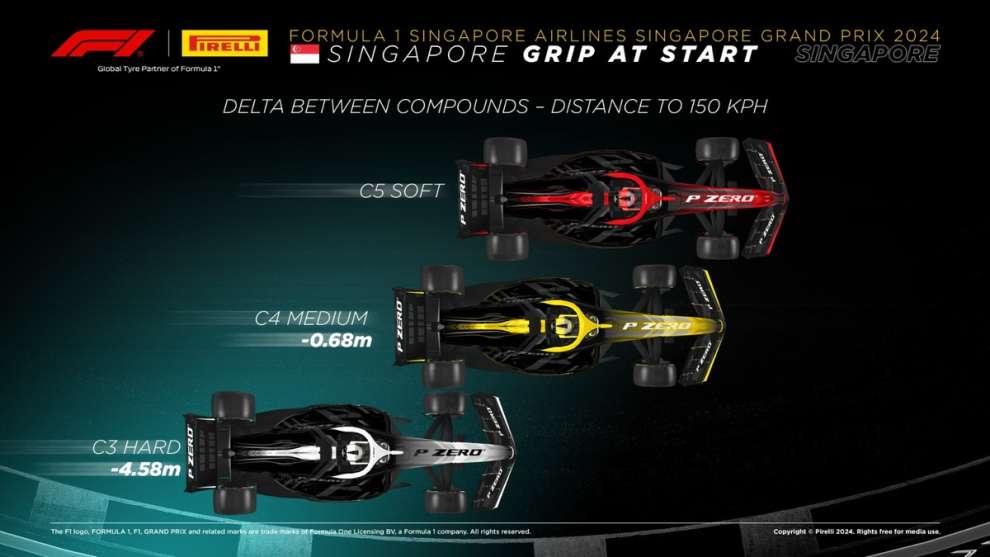By Carlo Platella
There are just hours left until the lights go out in Singapore, for a race that will see the two challengers for the world title start from the front row. The choice of tire at the start will be crucial for the duel at the top, as will be reading the evolution of a recently resurfaced track. The Ferraris start from the back, but despite the difficulties in overtaking they will have the possibility of recovering positions with the strategy. We talk about it with Mario Islandhead of Pirelli’s motorsport programs.
Asphalt variable
An important new development for the 2024 edition of the Singapore Grand Prix is the resurfacing of several areas of the circuit, with the new road surface appearing smoother than the previous one. It is therefore likely that what happened in Spa and Monza will be repeated, when the strong evolution of the new asphalt in the race led to a different performance from the forecasts from the tires, surprising the teams and impacting the strategies during the race. “There may be an unpredictable evolution of the track”confirms Isola. “On Friday at that time slot I would have expected a clear evolution of the track, while on Saturday it remained stable. The teams will have to read the track well in the first stint of the race to decide what to do”.
The head of Pirelli Motorsport, however, expects thermal degradation of the rear axle to remain the main limiting phenomenon in the race: “The good thing about all this is that anyway we saw no graining, while with such a new asphalt we would have expected a bit, especially on the soft. The tyres instead worked well. The limit is mainly the thermal degradation at the rear, on a track all about traction that stresses the rear tyres a lot”.
The basic plan
Mario Isola then goes on to illustrate the most probable strategy for the Grand Prix: “Clearly we know it’s a one-pit stop race here. With 28 seconds lost due to the breakeveryone will try to do just one. Starting on the medium with a scheduled stop between laps 21 and 28 to go on the hard we think is the fastest strategy”. Any race neutralizations would encourage teams to stop again, but in that case the options would be limited.
Isola continues: “With the exception of Colapinto, Bottas and Zhou, all the drivers kept just one set of hard tyres and one set of new mediums. If there was a Safety Car or if for any reason they had to do a second pit stop, from a certain point onwards they should necessarily go on the softwhich for this reason we have not completely ruled out as a possible racing compound. If they had ruled it out, as on other occasions, they would have at least kept another set of medium tyres”.

The other options
The softer compound could therefore prove useful in the race, even as soon as the lights go out. “If anyone wants be a little more aggressive with the starting compoundcould start on the soft and then switch to the hard between lap 13 and 19”explains Isola. A soft start is therefore possible for Norris and/or Verstappen, given the importance of the position advantage in Singapore. According to the simulations, in fact, the softer compound guarantees over half a meter of advantage in the sprint from 0 to 150 km/h, potentially decisive for the braking at turn 1.
Starting on soft tyres however would imply a very high pace in the early stages: “Overtaking is difficult. There is a fourth DRS zone that should help a bit. It is clear though that if the front runners decide to start with the soft they would have the possibility to manage the race pace a lot. Starting with the softest compound would certainly be a good idea the intention to manage the pace a lot at the beginningwhile with the average he would be able to push a little more”.

Pirelli is not even ruling out the hard compound at the start, a theoretically interesting option for those, like Perez and the two Ferraris, who start from the back: “For those who start from behind and perhaps want to be more flexible for a possible Safety Carwhich is quite likely here, could start on the hard and then switch to the medium in the second part of the race. Then we’ll have to see how the hard behaves. If it goes quite well, we’ll be able to extend the stint and at that point, with fewer laps remaining, we could think about the soft rather than the medium”.
Crazy qualification
Mario Isola finally comments on Saturday’s qualifying, characterised by the centrality of the tyres and a decidedly changeable asphalt: “The track did something a bit strange yesterday. On Friday it improved both in FP1 and FP2. On Saturday it improved a lot in FP3, an evolution that was absolutely expected given that it rained heavily on Friday night. In qualifying, however, the track stabilized a lot, in fact it was even slower than in FP3. Between Norris’ pole time and the best of free practice there is only a tenth of a difference, while normally it is much bigger”.

We are still trying to reconstruct what happened, but Pirelli has put forward the first hypotheses: “On the asphalt level, it is to be understood. The explanation we gave ourselves is that, as Singapore is in a very humid region, with no surrounding events between FP3 and qualifying, the humidity somehow condensed on the asphalt. Many of our engineers told me that the many pilots found a different track”. Qualifying, however, is now a thing of the past, with all attention now turned to the race, which will start at 2pm Italian time.
#Singapore #Pirelli #strategies #NorrisVerstappen #duel #Ferrari #comeback